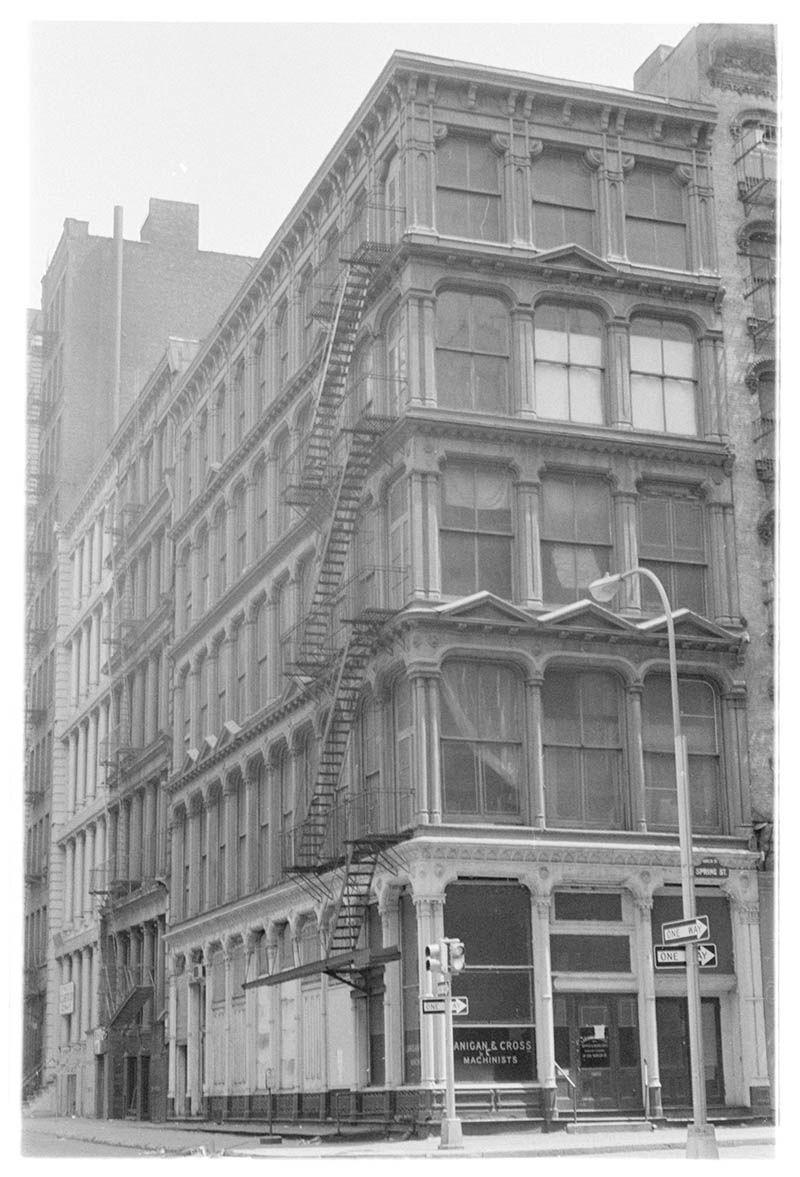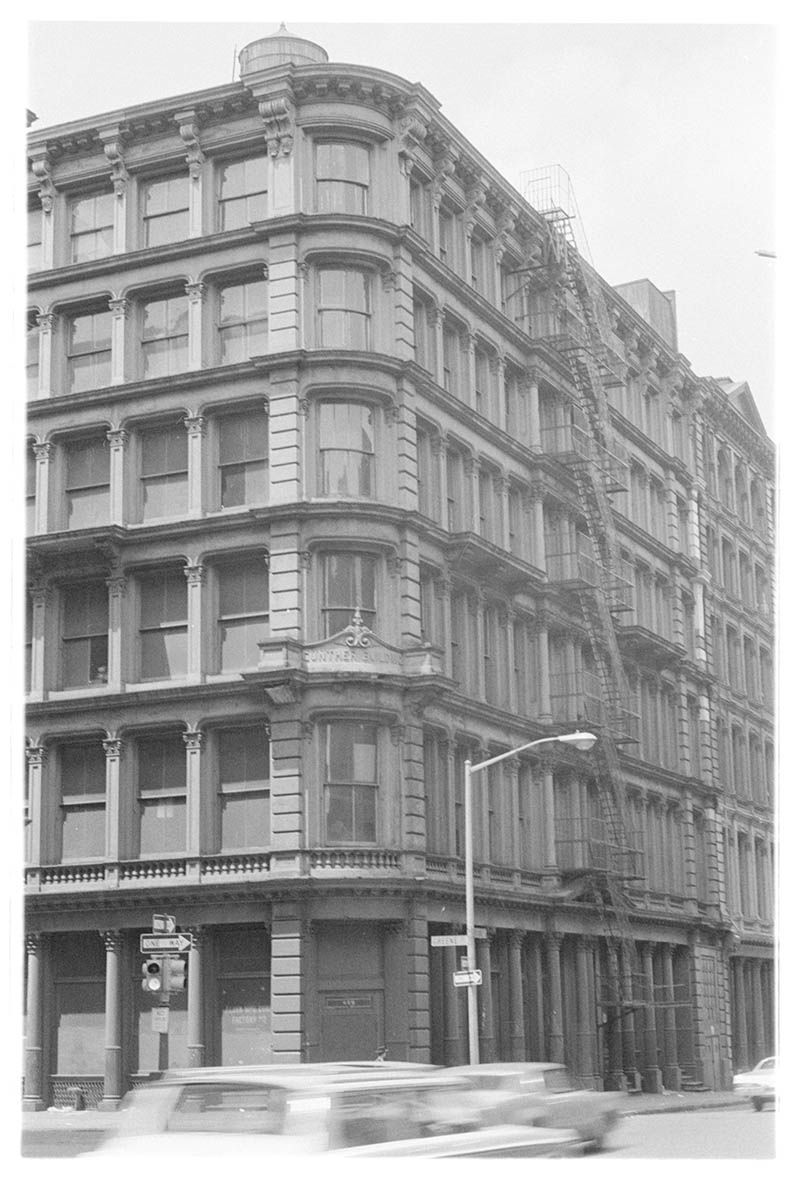Last-Minute NYC Holiday Gift Guide 🎁
We’ve created a holiday gift guide with presents for the intrepid New Yorker that should arrive just in time—


Village Preservation, short for Greenwich Village Society for Historic Preservation, is a non-profit membership organization that documents, honors and preserves the architectural heritage and cultural history of several neighborhoods in Lower Manhattan. Village Preservation recently received a treasure trove of donated photos of SoHo and Cast Iron New York taken by Edward LaGrassa in 1969, before cast-iron architecture was widely appreciated and rediscovered. These photos also date back to a time when neighborhoods with the greatest concentration of such architecture were either being bulldozed or slated to be by Robert Moses.
The organization painstakingly identified each site and location (where possible) of the unlabeled photos, given to them in support of their fight against a proposed SoHo/NoHo Upzoning plan. They have examined the beautiful black and white photographs taken by a student doing an architectural survey at the time and have analyzed the competing and contradictory forces at play on this part of Lower Manhattan at the time.

On Wednesday, July 21, explore the lost and still existing cast-iron buildings of NYC with the Executive Director of Village Preservation, Andrew Berman! Discover the largest concentration of cast-iron architecture in the world before landmarking ensured its preservation, when its fate was very much up in the air. Revisit some of SoHo’s most treasured architectural landmarks, including the Little Singer Building, the Haughwout Building, the Judd Foundation Building, and the Gunther Building, before they were renovated and restored. Explore the great cast iron landmarks of New York in Tribeca, Harlem, and Upper Manhattan. Learn about the revered Bogardus Building, the remains of which were mysteriously stolen and sold, in the process of being demolished. And see the semi-deserted streets of SoHo just after it was given a reprieve from wholesale demolition for Robert Moses’ Lower Manhattan Expressway, as the first artists were starting to furtively (and illegally) move into these often empty spaces.
The event is $10 or free for Untapped New York Insiders (and get your first month free with code JOINUS).
One of the many buildings included in LaGrassa’s collection is the Little Singer Building, at 561 Broadway, designed by Ernest Flagg, the same architect as the the Singer Building in Lower Manhattan which was once the world’s tallest building. It still stands today and its ornamented facade makes it a unique presence in Soho.

The E.V. Haughwout Building is a five-story commercial loft at the corner of Broome Street and Broadway. Built in 1857 with cast-iron facades, it originally housed Eder V. Haughwout’s fashionable emporium, which sold imported cut glass, silverware, handpainted china, and chandeliers. Mary Todd Lincoln actually had new official White House china painted here. The building was also the site of the world’s first successful passenger elevator.

At 101 Spring Street is the Judd Foundation Building, a five story cast-iron building located at the corner of Spring Street and Mercer Street. Constructed in 1870, it was the first building owned by Donald Judd, an American artist associated with the minimalist movement. The building also served as Judd’s studio, where he developed the belief that the placement of a work of art was as critical to its understanding as the work itself. Judd’s installations balance his respect for the historic nature of the landmark cast-iron building and his approach to architecture and design.

The Gunther Building at 473 Broome Street was designed by Griffith Thomas in 1871, distinguished from its cast-iron neighbors by its bright white facade, Corinthian columns, and its curved glass corner. Gunther was a prominent 19th century furrier, with the building originally used as a warehouse for textiles and furs. Lenny Kravitz was once a resident of the building, which now serves as an artist co-op.

The Bogardus Building was one of the most fascinating buildings in New York’s history, since the remains of it were mysteriously stolen and sold twice. The Bogardus Building/Edward Laing Stores stood at the intersection of Washington and Murray Streets in the Washington Market area. It was one of the first cast-iron buildings in the city, with prefabricated and interchangeable parts. The speed in which the building was constructed–just two months–was related directly with the technological advancements utilized and was certainly a key moment in the evolution of the skyscraper in the late 19th century. However, the Landmarks Preservation Commission recommended that the entire building, particularly the facade, be dismantled and “re-erected as an integral part of a new building,” later determined to be the Manhattan Borough Community College. The townhouses were moved in one piece, to a new location, but the Bogardus building was in such poor shape, it had to be taken down in parts, catalogued, and stored in a vacant lot, all which took place in 1971.
Manhattan Borough Community College would not begin construction until 1974, so the Bogardus building remained in pieces during the interim. Yet the building contractor noticed that people had actually stole some of these remaining pieces. The contractor told police that the perpetrators stole 20 to 30 panels, 2/3 of the facade, over the previous several weeks–22 broken pieces were subsequently found in a Bronx junkyard for $90 a truckload. The rest of the panels were then designated to be included in a building at South Street Seaport, and the rest of the Bogardus building panels were moved to a secret location in a city-owned building on 52nd Street, off 10th Avenue. When architects went to measure the panels with the Commission in June 1977, though, the hidden storage unit was missing all of the panels.
Andrew Berman has been the Executive Director of Village Preservation since 2002. During that time, the group, the largest neighborhood preservation organization in New York City, has secured landmark designation of more than 1,250 buildings, including 11 new historic districts and historic district extensions and dozens of individual landmarks, and zoning protections for nearly 100 blocks to help preserve the scale and character of historic neighborhoods. Prior to Village Preservation Berman worked in both city and state government, and has a background in architectural history.
On Wednesday, July 21, explore the lost and still existing cast-iron buildings of NYC with the Executive Director of Village Preservation, Andrew Berman! The event is $10 or free for Untapped New York Insiders (and get your first month free with code JOINUS).
Next, check out 12 Buildings That Should be Brought Back to NYC!
Subscribe to our newsletter